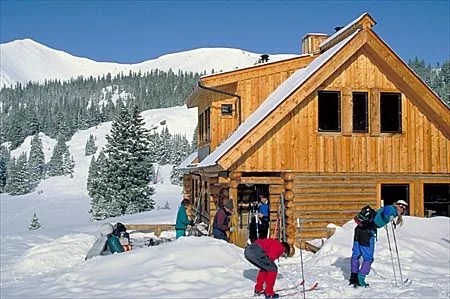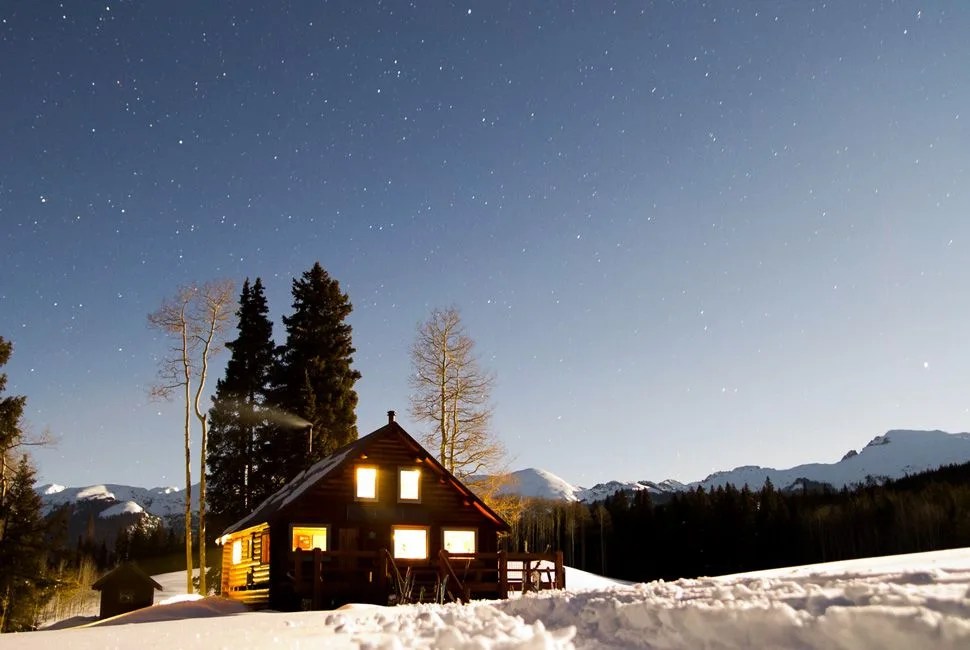Few things in life max out both your pleasure and pain thresholds quite like a weekend spent at a 10th Mountain Division hut in Colorado. There are 34 of them spread throughout the state’s Rocky Mountains, making up what is considered one of the most impressive networks of backcountry shelters outside of Europe. Most are like the second home you dream of owning, with saunas and large sun decks; others more closely resemble the unibomber’s cabin. Some sit just a few miles away from the nearest road, while many require an entire day, and several thousand feet of ascent, to reach. But all sit among some of the most rugged and beautiful wilderness in the country.
In any case, be prepared for a challenging approach — on skis or foot — and thin air, once you arrive. The average route to a hut is six to seven miles long with 1,500 to 2,500 feet of elevation gain; many sit at or above 10,000 feet, where sleep is restless and so much as lacing up your boots will leave you out of breath. On a recent ski tour trip to the Eiseman hut, perched on an 11,200-foot ridge line, across from Vail, I was part of a crew of 16 that made the seven-mile ski and splitboard tour, 3,000 vertical feet up the Spraddle Creek drainage. The Eiseman hut is notoriously difficult to reach but also notoriously plush, and it has killer skiing right out the front door.
When to Go

Prime hut season is typically April, as days are longer and spring corn snow is in full effect. Midwinter is also a good option if skiing or snowboarding is your prime objective, though days are very short. The summer season is a smart time to visit if you want to bring your kids or simply want a slightly less technically challenging trip. Without snow, some huts have dirt access roads that allow you to drive much of the approach and packs are a lot lighter without skis, boots and winter layers.
While open all year round, The 10th Mountain Division huts really come alive in winter, when they can serve as a regenerative basecamp for cold hypoxic forays to surrounding high peaks in search of virgin snow. Ski touring is huge in Colorado, and much of that has to do with the existence of the hut network itself. While soldiers did spend time in these same areas to hone their skiing and mountaineering skills before heading off to the Italian Alps to fight Nazis in World War II, the huts weren’t necessarily used by them but rather named after them. Like the soldiers often did, the exceptionally fit ski from hut to hut over several days. One such epic, known as the Trooper Traverse, is a challenging 40-mile ski mountaineering trip from Leadville to Aspen. Even the shorter routes, though, require some backcountry experience and advanced skiing skills.
A hut trip in the 10th Mountain Division has a set of rules all its own. It’s not quite camping, but since the huts lend themselves to group outings, your pack will undoubtedly weigh the same as if it were. The main difference is that on top of essentials like backcountry emergency gear and a sleeping bag, you’ll also want “essentials” like bacon and beer. Even more important than the list of what you need to bring is the list of what you can leave behind: Like many huts, the Eiseman had a nicer kitchen than I have in my Brooklyn condo, with a beautiful old wood-burning stove, separate gas burners, enough dishes to cover a three-course dinner party for 20 and a sump pump to provide running water for doing dishes.
